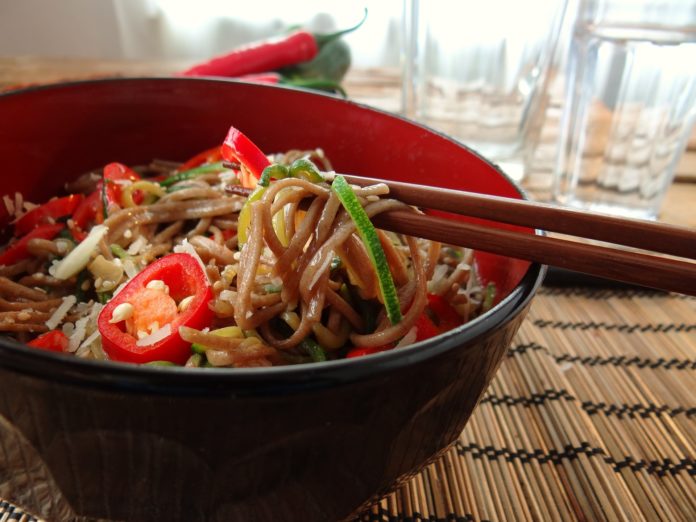Soba noodles—made from a mixture of buckwheat flour and wheat flour—are a nutritious, delicious, and rich dish in the tradition of Japan.
Soba noodles can be used in a variety of foods, and here are the basic things you need to know.
Soba is eaten with chopsticks.
Like most Japanese noodles, the Soba is served cold and dry in summer and in winter, with soy or dashi-based sauce. Most of the toppings are almost uncooked.
Cold Soba noodles are most often served on a bamboo mat called a Zaro. Sometimes, dried Nori seaweed is added to the dish in a sauce called Soba Tsuyo as a side dish. The Tsuyo is made from a blend of Dashi, sweetened soy sauce, and Mirin. Wasabi, pickled ginger and scallion toppings are common additions to the Tsuyo sauce.
With Soba noodles, it is customary to eat vegetables or fish in light tempura made from excellent light beer and soda water.
Soba is traditionally eaten on New Year’s Eve in most areas of Japan—a tradition that survives to this day. In the Tokyo area, it is customary to give Soba to new neighbors who have moved apartments, but this custom is not as common as it used to be.











